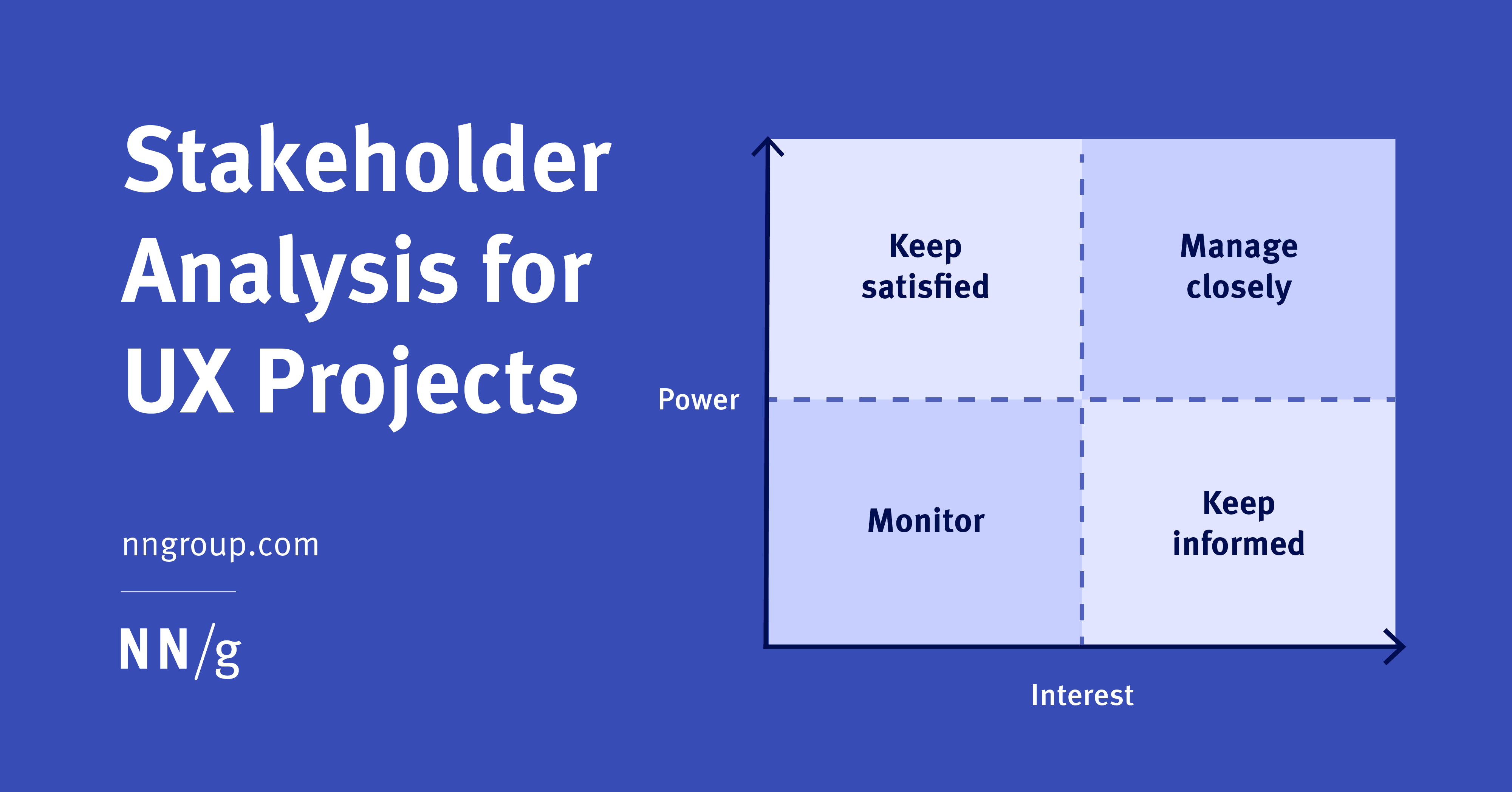Every project comes with pre-existing constraints and requirements. While learning users' needs is crucial to creating user-friendly designs, knowing the needs and goals of stakeholders helps define and prioritize what is being designed. Usually, it requires a lot of effort to collect, document, and make sense of stakeholders' expectations. Luckily, there are several ways the design process can be tailored to maximize results.
1. Interviewing Business Stakeholders
Working with stakeholders directly is ideal because they can tell us about their objectives, priorities, existing research, business constraints, and definition of success. Important questions to ask business stakeholders can include:
● What are key business objectives? How does the business achieve those objectives?
● What are your biggest priorities?
● What research/data do you already have?
● What would a successful outcome be for your business?
● What are the challenges you’ve faced in trying to address these issues before?
● What are the key constraints for this sprint/project?
Interviewing Technical Stakeholders
Additionally, technical stakeholders like developers and engineers can help us find an approach that is technically feasible while still meeting business goals and user needs. Important things to ask could include:
● Are we restricted to any particular technologies?
● What are your biggest technical priorities?
● What is the engineering team’s capacity/capability for this project?
● Does this product/experience need to interface with any third-party technology?
● Does this product/experience need to support legacy or upcoming systems?
● Do you have any changes in progress right now that would impact the scope of this sprint/project?
● What would be the most effective way for us to collaborate and handoff with your team?
● Do you have demo accounts, and/or a complete demo of the experience? (for non-public sites)
● Do you have an existing style guide/design library we should reference?
Desk Analysis
Meanwhile, a desk analysis can be conducted without stakeholders, using secondary sources such as the company's public website, media coverage, customer reviews, and public competitor/industry information. Key things to answer from a desk analysis can include:
● What does the company do?
● Why do they do it? (mission statement)
● What do they care about? (vision, values, culture)
● What is their branding? (typography, color palette, imagery, tone)
● How are they covered in the media?
● What are customers saying?
Sources & Further Reading





